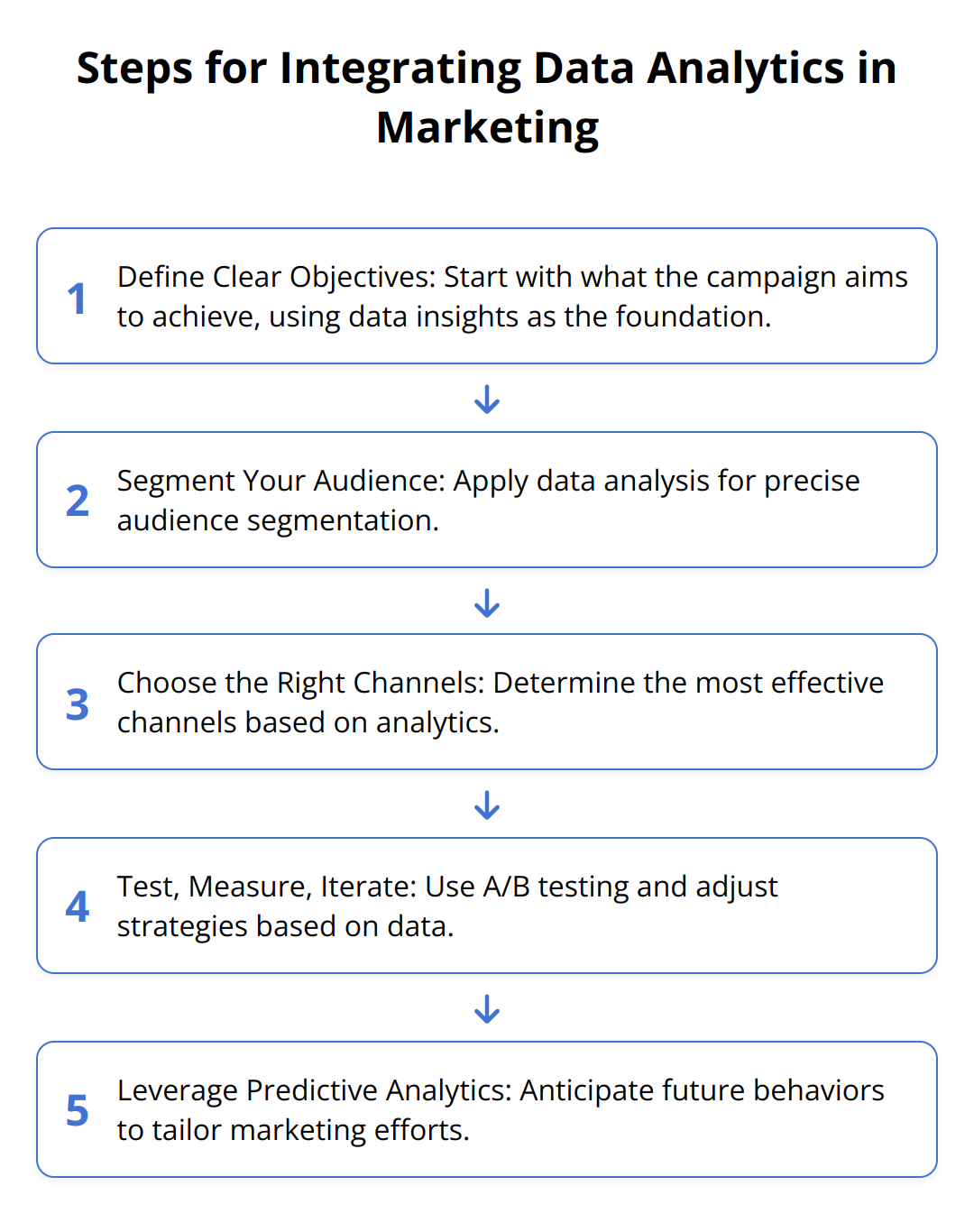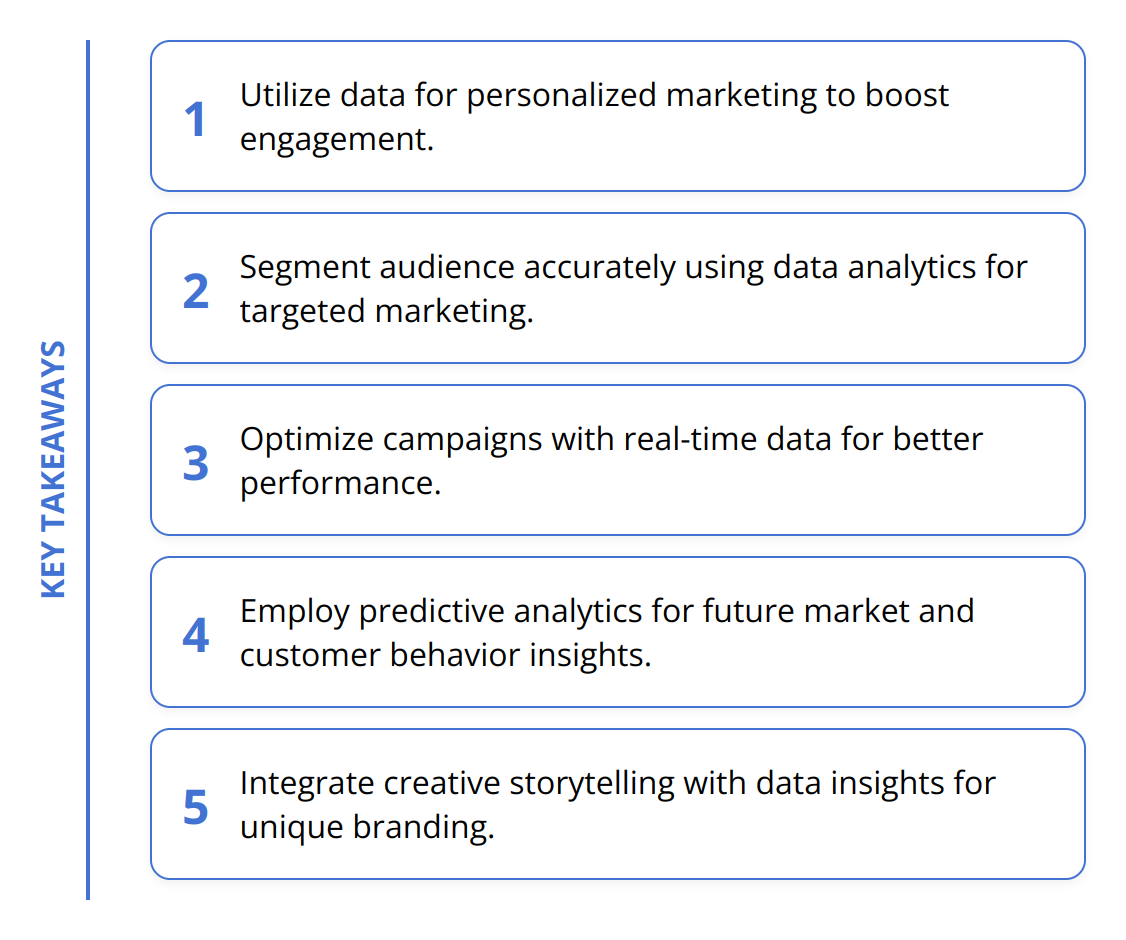We at Emplibot understand that navigating the complex landscape of modern business requires a deep understanding of both data analytics and marketing. Each plays a vital role in driving success and achieving organizational goals. This blog post sheds light on their differences, how they complement each other, and the benefits of integrating data analytics into marketing strategies. Join us as we explore the dynamic relationship between these two critical domains.
Understanding Data Analytics
Data analytics is the engine room of modern business decisions. It allows companies to sift through vast oceans of data to find golden nuggets of insight that inform decisions, drive innovations, and improve customer experiences. Here, we explore what defines data analytics, the tools and techniques that power it, and why it’s indispensable in decision-making processes.
The Essence of Data Analytics
At its core, data analytics is about transforming raw data into actionable insights. It’s not just about collecting data; it’s about asking the right questions and applying analytical methods to uncover answers. The focus areas range from customer behavior, operational efficiency, market trends to financial performance. Data analytics illuminates patterns and anomalies, helping businesses understand not only what is happening but also why it’s happening.

Tools and Techniques That Drive Data Analytics
The effectiveness of data analytics heavily depends on the tools and techniques employed. Statistical analysis, data mining, and machine learning are at the heart of modern data analytics, enabling businesses to predict future trends and make well-informed decisions. Tools like Python and R programming, along with platforms that offer real-time analytics and visualization capabilities such as Tableau or Power BI, are vital for data analysts. Leveraging these tools allows for the examination of complex datasets and the crafting of insightful visual narratives that are easily digestible by decision-makers.
For those starting on this journey, exploring the basics of Python for data analytics can offer a solid foundation.

Why Data Analytics Is Non-negotiable in Decision Making
The importance of data analytics in decision-making processes cannot be overstated. Here’s why:
-
Informed Decisions: Data analytics equips businesses with factual insights, reducing guesswork and enabling more confident decision making.
-
Risk Mitigation: Through predictive analytics, companies can foresee potential pitfalls and make strategic moves to avoid them.
-
Customer Insights: Understanding customer preferences and behaviors helps in tailoring products and services, thereby enhancing customer satisfaction.
-
Operational Efficiency: Identifying inefficiencies within processes allows for the streamlining of operations, saving time and resources.
-
Competitive Advantage: In a data-driven world, the ability to quickly interpret and act on data insights can set a company apart from its competition.
In conclusion, data analytics serves as the backbone of strategic business operations. It’s not just about the data you have, but how you use it that counts. By leveraging the right tools and techniques, businesses can unlock the full potential of their data, leading to smarter strategies, better customer experiences, and ultimately, greater success.
Marketing Fundamentals Unveiled
As we shift our focus from the intricacies of data analytics, understanding the multifaceted world of marketing becomes imperative. Marketing isn’t just about selling products or services; it’s about crafting stories that resonate with people and foster meaningful connections between brands and their audiences. The success of a business is greatly influenced by its marketing strategies, which are dynamic and ever-evolving in response to consumer behavior, market trends, and technological advancements.

Crafting Marketing Strategies for Today’s Audience
The essence of marketing lies in its ability to adapt and respond to the ever-changing consumer landscape. A successful marketing strategy is one that is not only data-informed but is also flexible and agile. Businesses need to leverage data analytics to gain insights into customer behaviors and preferences, but equally important is the creative application of these insights to shape strategies that captivate and engage.
For example, crafting personalized campaigns has become a gold standard in modern marketing. Studies show that personalized email campaigns lead to a 6x higher transaction rate. However, personalization isn’t just about addressing the customer by their first name; it’s about tailoring content, offers, and experiences based on customer data to create a truly individualized experience.

Tactics to Drive Engagement and Sales
In the realm of marketing, tactics are the actions taken to bring strategies to life. This could range from content marketing efforts designed to educate and inform, to social media campaigns aimed at boosting engagement and brand awareness. The key is to select tactics that align with your overall strategy and goals. For instance, if increasing customer retention is the goal, developing a loyalty program that rewards repeat customers could be an effective tactic.
Marketing tactics must also evolve with technological advancements. Incorporating AI in digital advertising is a prime example of utilizing technology to enhance marketing efforts. AI can help deliver more targeted ads, improve customer segmentation, and even predict customer behavior, making marketing efforts more efficient and effective.
The Power of Creativity and Branding
At the heart of marketing lies creativity—the ability to see beyond the data and connect with audiences in innovative and impactful ways. Brands that stand out are those that offer unique experiences, tell compelling stories, and authentically express their identity. Branding is more than logos and taglines; it’s the essence of a business, its values, and its promise to customers.
Creativity in marketing doesn’t mean reinventing the wheel. Sometimes, it’s about presenting common ideas in new, refreshing ways. Take, for example, Apple’s minimalistic approach to product design and marketing—a stark contrast to the information overload prevalent in the tech industry. Their clear, concise messaging and clean design elements reflect the brand’s focus on simplicity and innovation.
In conclusion, integrating data analytics with a strong, creative marketing strategy offers the best path forward for businesses looking to thrive in today’s competitive landscape. The balance between data-driven insights and innovative, engaging marketing tactics can transform how businesses connect with their audiences, drive sales, and build brand loyalty. Remember, effective marketing is not just about reaching the audience; it’s about resonating with them.
Tips for Effective Marketing Strategies:
-
Utilize data analytics for personalized marketing campaigns.
-
Keep tactics agile and responsive to market trends and consumer behavior.
-
Embrace technology, such as AI, to enhance tactical execution.
-
Foster creativity in branding and storytelling to differentiate your brand.
How Data Analytics Fuels Marketing
The fusion of data analytics and marketing represents a cornerstone of modern business strategy. However, understanding their distinct objectives and the transformative power of their integration is key. This chapter explores how the meticulous analysis of data underpins effective marketing strategies, leading to more impactful and efficient campaigns.
Distinct Objectives, Unified Goals
While data analytics focuses on uncovering trends, patterns, and insights across vast datasets, marketing aims to connect with the audience at a personal level, crafting messages that resonate and drive engagement. Data analytics seeks to provide a foundational understanding of the marketplace, customer behavior, and operational efficiencies. Conversely, marketing utilizes this understanding to develop strategies that influence consumer perceptions and actions positively.
The ultimate goal shared by both fields is to enhance business performance—data analytics does so by informing strategic decisions, while marketing focuses on executing these decisions in a way that maximizes impact and ROI.
The Practical Impact of Data on Marketing Strategies
Embedding data analytics into marketing strategies isn’t just beneficial; it’s a game-changer. Here are some practical ways in which data analytics enriches marketing:
-
Personalization at Scale: Leveraging customer data allows for crafting personalized marketing messages. This leads to significantly higher engagement rates compared to generic communication. For instance, businesses using data analytics for personalized email campaigns note an increase in open rates by up to 29% and click-through rates by up to 41%.
-
Targeting Precision: Data analytics enables marketers to identify and segment their audience with unparalleled accuracy. This means marketing resources are directed toward the individuals most likely to convert, improving efficiency and reducing waste.
-
Campaign Optimization: By analyzing campaign performance data, marketers can identify what works and what doesn’t in real time, allowing for rapid adjustments that improve outcomes. This continuous improvement loop ensures resources are invested in the highest-performing initiatives.
-
Predictive Marketing: Data analytics offers the ability to forecast future customer behaviors and market trends. This predictive insight allows businesses to stay ahead, crafting marketing strategies that anticipate and meet emerging consumer needs.
For practical insights on integrating these approaches, exploring marketing automation provides valuable guidance.
Integrating Data Analytics in Marketing Campaigns
The integration of data analytics into marketing campaigns requires a strategic approach. Here are actionable steps to ensure successful integration:

By weaving data analytics into the fabric of marketing strategies, businesses unlock the potential for more resonant, effective, and impactful campaigns. The synergy between these domains not only elevates the customer experience but also drives sustainable business growth.
Final Thoughts
The journey through the realms of data analytics and marketing underscores a fundamental truth: their integration is not merely beneficial but essential for businesses aiming for the zenith of success in today’s digital age. The complementary nature of data analytics and marketing lays the groundwork for a strategic synergy that enables businesses to navigate the complexities of consumer behavior and market dynamics with unmatched precision.

Data analytics offers a deep dive into the ocean of data, surfacing insights that power strategic decision-making and operational excellence. On the other hand, marketing leverages these insights, applying creativity and strategic thinking to craft messages and campaigns that resonate deeply with target audiences. This union promises a competitive advantage, empowering businesses to outpace their rivals in understanding and satisfying customer needs.
Furthermore, the strategic advantages of blending data analytics with marketing cannot be overstated. From personalizing customer experiences to optimizing campaign performance and beyond, the potent combination of analytics and creativity ensures resources are invested in pursuits that yield the highest returns. It turns conjecture into clarity, enabling marketers to focus their efforts on strategies proven by data to be most effective.
Looking ahead, the future teems with exciting developments at the intersection of data analytics and marketing. Leveraging the power of AI and machine learning, predictive analytics will become increasingly sophisticated, offering even more precise insights into future market trends and consumer behaviors. Moreover, as technology evolves, so too will the tools and platforms at our disposal, enhancing our ability to collect, analyze, and act on data in real-time.
In this dynamic landscape, the need for effective content creation and SEO optimization remains paramount. Here at Emplibot, we’re committed to streamlining this process for you. Our platform publishes SEO-friendly articles to your WordPress site 100% automatically, including keyword research, images, and internal linking. Embracing our solution allows businesses to effortlessly maintain an engaging blog that captivates audiences and drives traffic, all without lifting a finger.
In conclusion, the future of business strategy lies in the harmonious integration of data analytics and marketing. By harnessing the immense potential of data-driven insights and combining them with creativity and strategic marketing execution, businesses can unlock new levels of success and growth. As we move forward, embracing this synergy and staying abreast of technological advancements will be key to thriving in the competitive market landscape.

